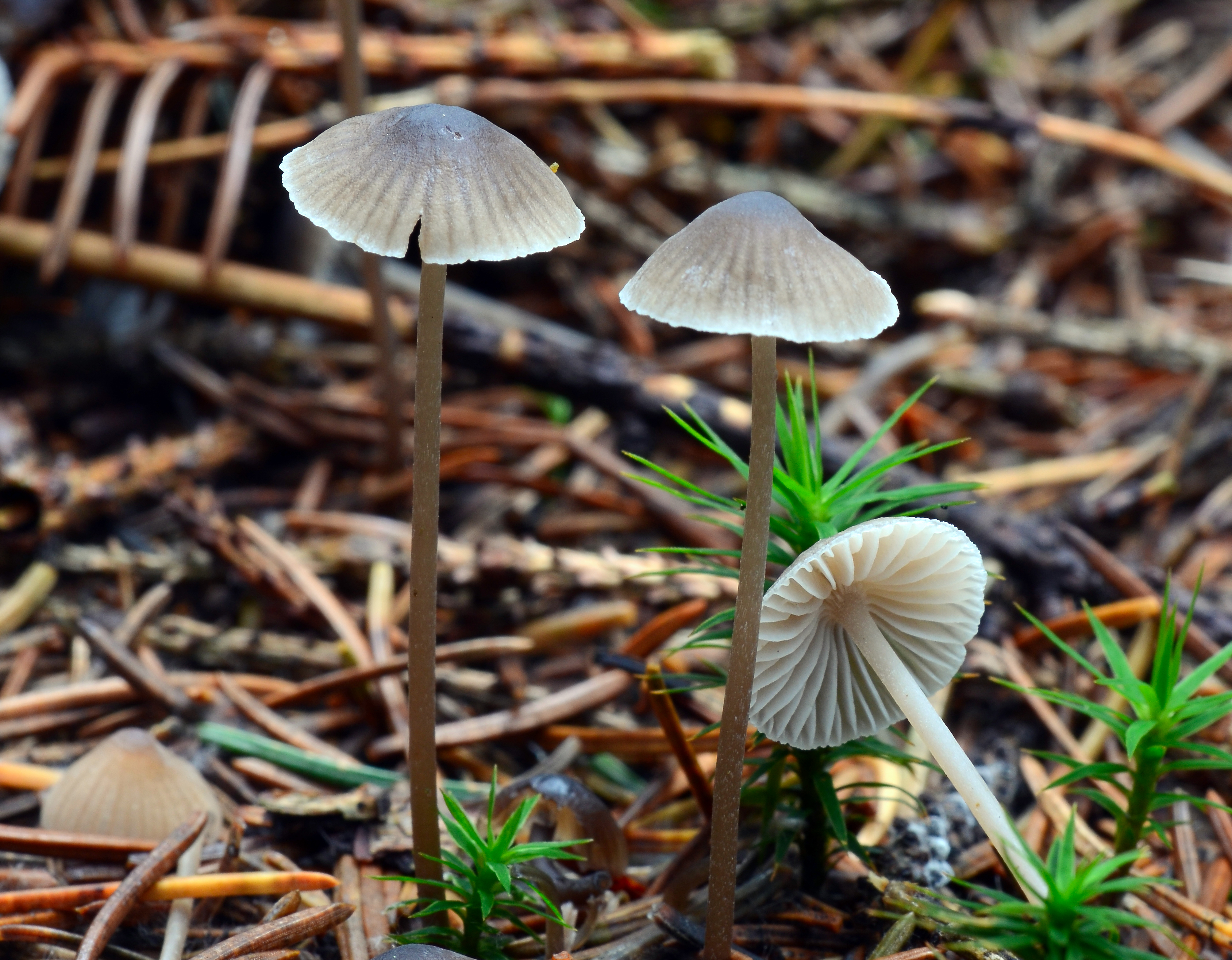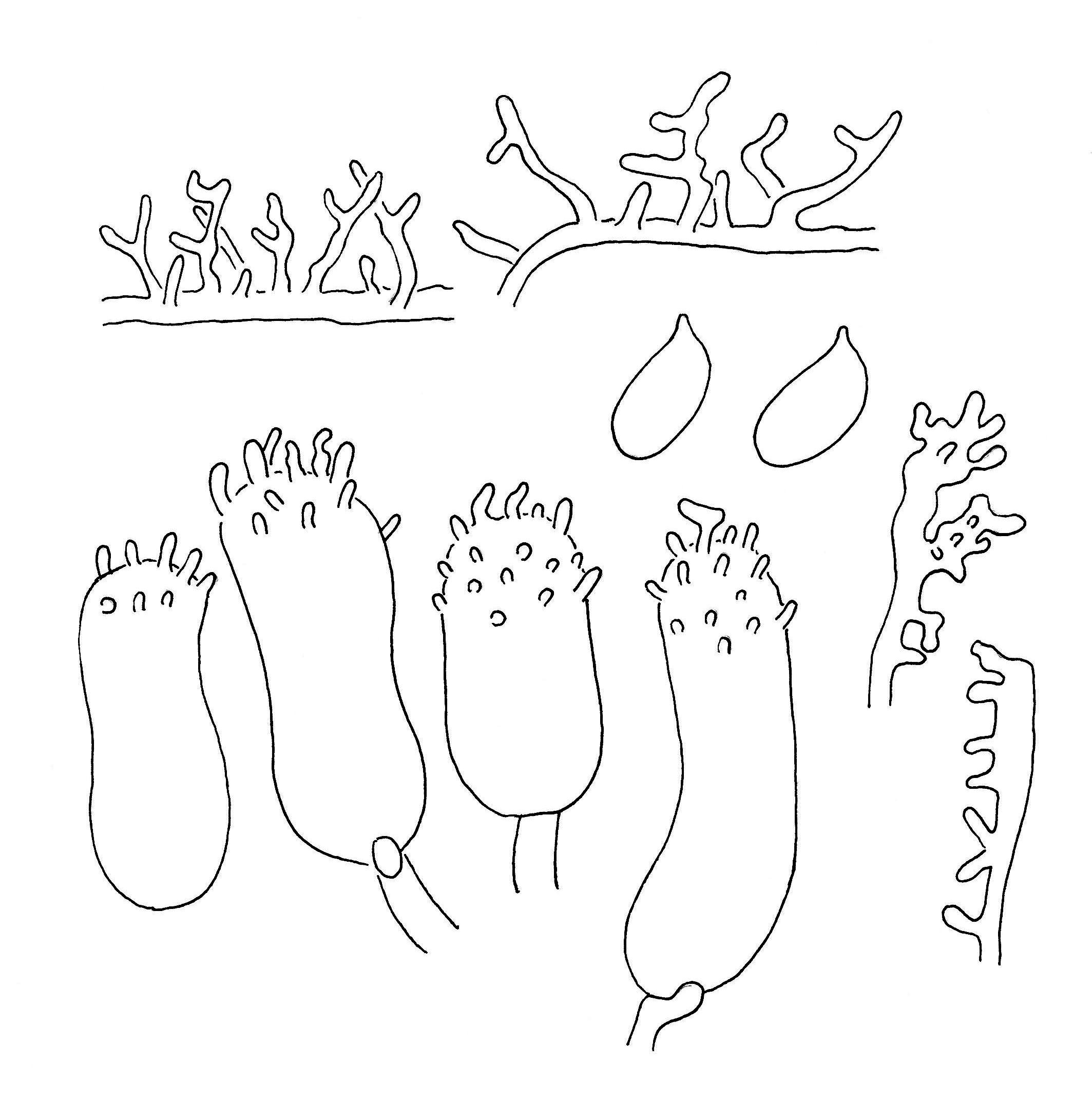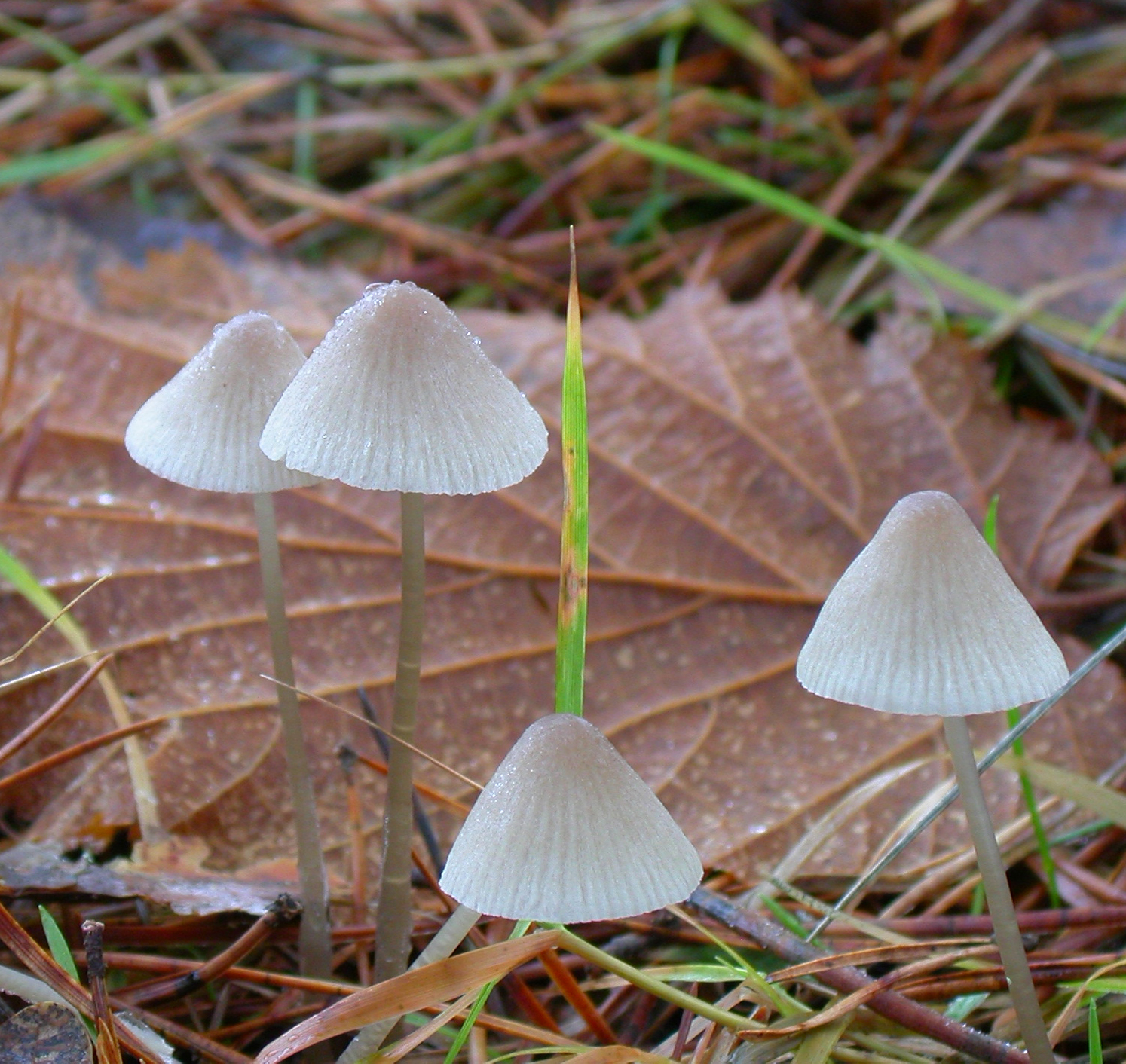Mycena septentrionalis
Mycena septentrionalis
Description
Hyphae of the pileipellis, spores, cheilocystidia and terminal cells of the hyphae of the cortical layer of the stem.
Cap 5-22 mm across, conical, campanulate to convex, sometimes with an umbo, sulcate, translucent-striate, at first white-pruinose and then often looking almost bluish black, glabrescent, dark sepia brown at the centre, margin paler to whitish. Gills 17-20 reaching the stem, adnexed, decurrent with a short tooth, pale grey or grey with a brownish shade, the edge paler. Stem 25-80 x 0.5-2 mm, cylindrical, equal, pruinose above, glabrous below, whitish to greyish above, pale brown below. Odour of Pelargonium graveolens, sometimes indistinctive. Basidia 25-40 x 6-8 µm, 4-spored, with sterigmata 3-5 µm long. Spores (7.5-)8-9(-10.5) x (3.5-)4-5.1 µm, Q = 1.6-2.1, Qav = 1.9, elongated pip-shaped, amyloid. Cheilocystidia 12-46 x 7-18 µm, forming a sterile band, saccate or more or less shaped like an hour-glass, with broad base, some more clavate, obpyriform or spheropedunculate, covered with few to more numerous warts or cylindrical, branched and curved, coarse excrescences 1-10 x 1-2 µm. Pleurocystidia similar. Hyphae of the pileipellis 1.5-3.5 µm wide, covered with straight to curved or much branched excrescences 1-20 x 1-2 µm, forming dense, corralloid masses. Hyphae of the cortical layer of the stem 1.5-3.5 µm wide, smooth to diverticulate, excrescences 0.5-4 x 1-1.5 µm, terminal cells up to 10 µm wide, variously inflated, covered with fairly coarse excrescences 2-3 x 1-2 µm. Clamps present in all tissues.
Ecology and distribution
Gregarious in coniferous woods, mainly under Picea. Autumn. Widely distributed but not very common in Norway.


